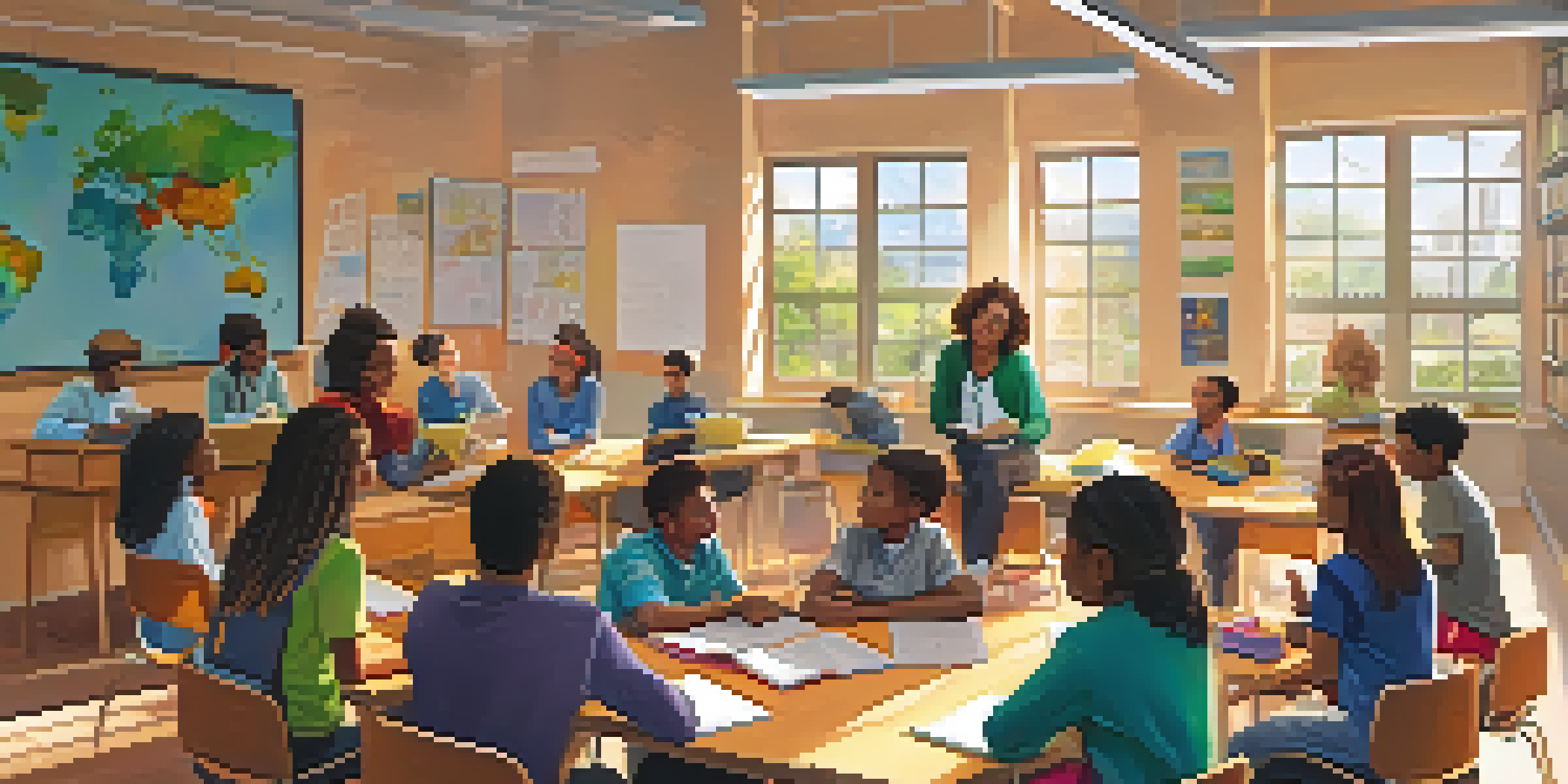Integrating Peer Learning into Curriculum Design Practices

Understanding Peer Learning and Its Benefits
Peer learning is an educational practice where students learn from each other, fostering a collaborative environment. This approach encourages active engagement, as learners take responsibility for their education and support one another. The benefits are profound: it enhances critical thinking, communication skills, and builds a sense of community among students.
The Role of Curriculum Design in Education
Curriculum design is the backbone of effective education, shaping how knowledge is delivered and experienced. It involves planning, implementing, and evaluating educational experiences to meet learners' needs. A well-structured curriculum not only supports academic goals but also cultivates essential life skills, preparing students for the future.
How Peer Learning Fits into Curriculum Design
Integrating peer learning into curriculum design transforms traditional teaching methods into more interactive experiences. By embedding collaborative tasks and group projects into the curriculum, educators can create opportunities for students to learn from one another. This not only enhances comprehension but also promotes a sense of belonging within the classroom.
Strategies for Implementing Peer Learning
To effectively integrate peer learning, educators can employ various strategies, such as group discussions, peer reviews, and collaborative projects. These methods encourage students to engage with the material actively and share diverse perspectives. Additionally, incorporating technology, like discussion boards or collaborative tools, can further facilitate peer interactions.
Assessing Peer Learning Outcomes
Evaluating the effectiveness of peer learning can be challenging but is essential for continuous improvement. Educators can use qualitative and quantitative methods, such as surveys, reflections, and performance assessments, to gauge student engagement and understanding. This feedback can inform future curriculum design, ensuring that peer learning continues to thrive.
Overcoming Challenges in Peer Learning
While peer learning offers numerous benefits, it can also present challenges, such as unequal participation or conflict among peers. Educators must be proactive in addressing these issues by setting clear expectations and guidelines. Providing training on collaboration skills can also empower students to engage more effectively with their peers.
Examples of Successful Peer Learning Initiatives
Many successful educational institutions have embraced peer learning as a core component of their curriculum. For instance, some universities promote peer-led study groups, where students facilitate discussions and tackle complex topics together. These initiatives not only improve academic performance but also foster lasting friendships and networks among students.
The Future of Peer Learning in Education
As education continues to evolve, the role of peer learning is likely to expand, especially with the rise of technology. Virtual collaboration and online learning environments can enhance peer interactions beyond the classroom. Embracing these changes will be crucial for educators aiming to create inclusive and engaging learning experiences.